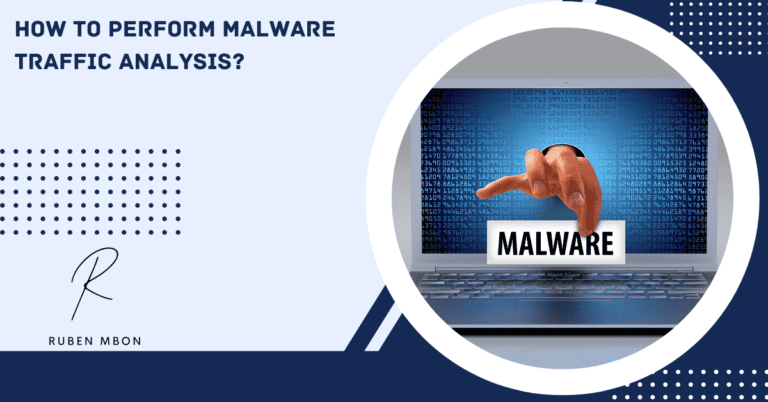Did you know that in the United States, telecommuting has increased by 17.9% over the past year? That’s right – more and more people are working from home, thanks to technological advances that have made it easier to stay connected. But while this may be great news for workers, it can also pose a risk to employers if proper security measures aren’t taken.
In this article, we’ll look at what remote work security is and why it’s important. We’ll also discuss some of the most common threats to remote workers and offer tips on protecting yourself against them.
So whether you’re a worker who telecommutes occasionally or a business owner who wants to ensure your employees are safe online, read on for everything you need to know about remote work security!
What is Remote Work Security?
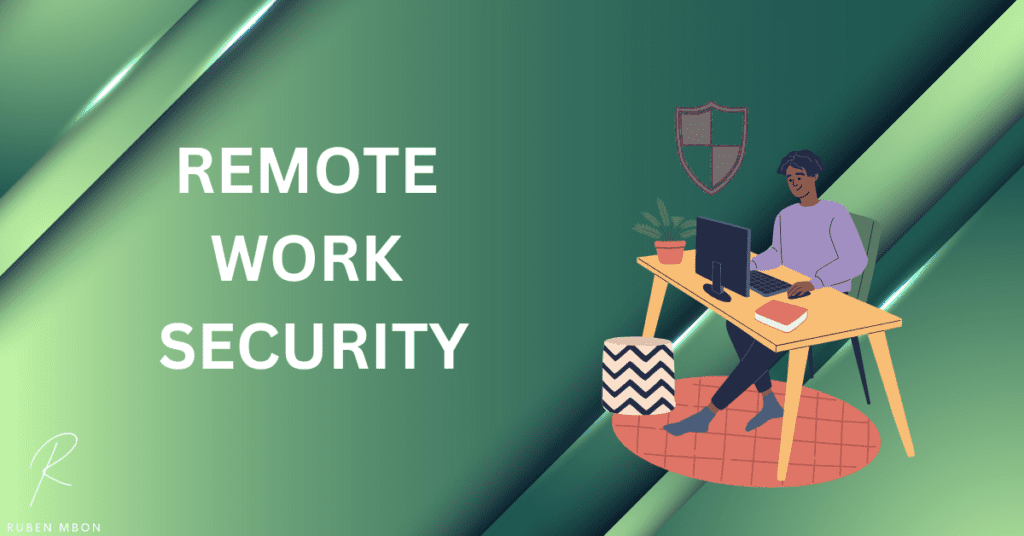
Remote work security is identifying potential threats and mitigating risks when working from a remote location. This includes securing networks, mobile devices, data, applications, and user accounts to prevent unauthorized access. It also involves educating employees on best practices for safe remote computing.
When it comes to telecommuting, employers must be aware that their employees are exposed to a variety of cyber threats, including phishing attacks and malicious software. Therefore, it’s important that they take the necessary steps to protect themselves and their data from potential cyberattacks.
Why It’s Important?
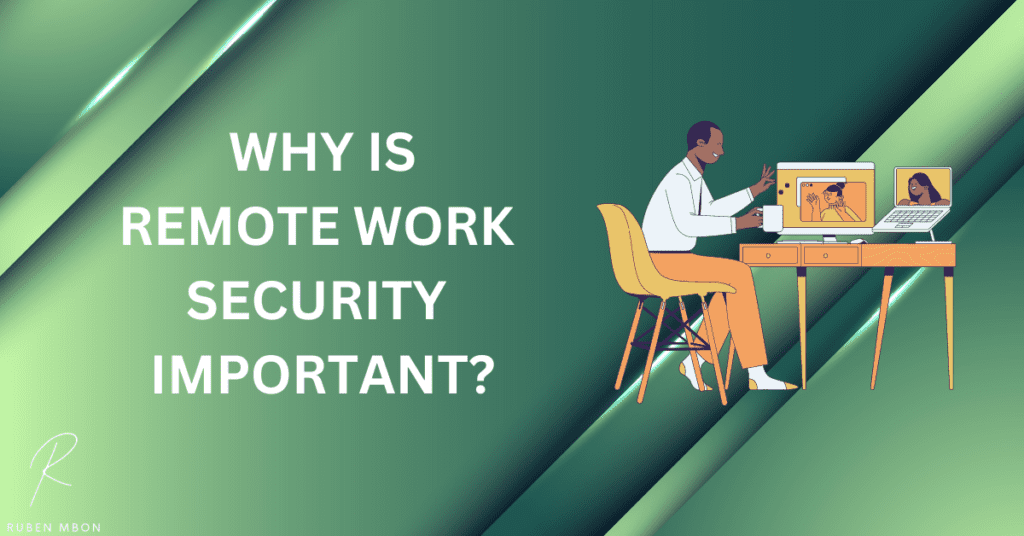
When people work from home, they can be more vulnerable to malicious actors because they don’t have the same protection as in the office. The tools and resources businesses use to secure their networks and systems are not always available for remote workers. Therefore, employers must ensure their employees take the necessary steps to protect themselves and their data.
Remote work security is also important for businesses because it helps to protect sensitive information from falling into the wrong hands. If a malicious actor were to gain access to a company’s network, they could steal confidential information such as customer data, data and login credentials, or financial records. This could have devastating consequences for any business, which is why it’s so important to have proper security measures in place.
Lastly, remote work security is important because it helps businesses ensure compliance with industry regulations. Many industries have strict rules and regulations that must be followed in order to maintain a safe and secure environment. By putting the necessary security measures in place, businesses can make sure they are compliant with these regulations and protect themselves from potential penalties or sanctions.
By understanding what remote work security is and why it’s important, employers can take the necessary steps to protect their employees and their data from potential threats.
Common Remote Work Security Threats
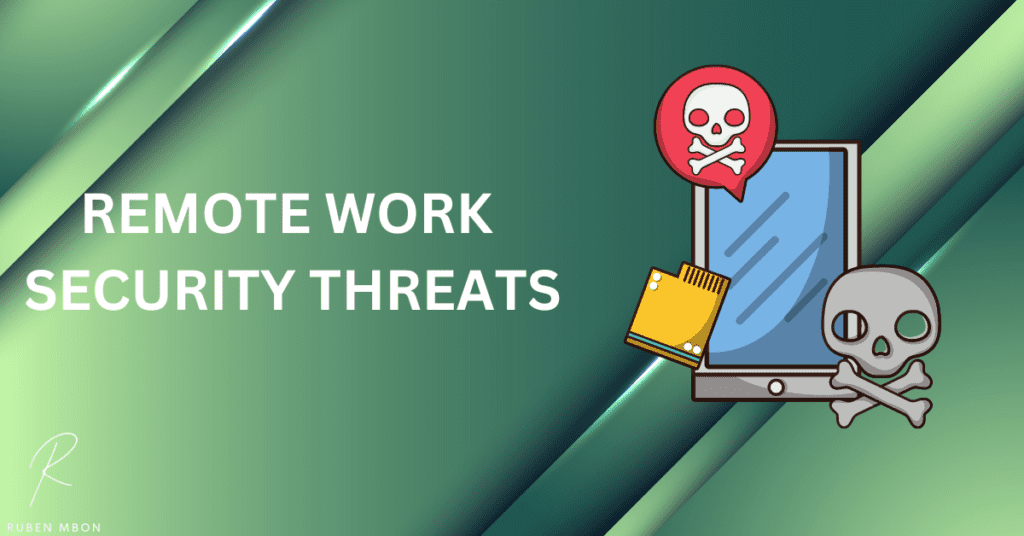
Since remote workers are typically using public networks or personal devices, they can be more vulnerable to cybercriminals than in-office workers. Here are some of the most common remote work security challenges they face:
1. Phishing attacks
Phishers send fake emails that appear to come from a legitimate source, with the goal of stealing personal information or money. For instance, they may ask for your bank account details or Social Security number.
In addition to email, phishers may also use instant messaging or text messages to target their victims. It’s important for remote workers to be aware of these threats and know how to recognize a phishing attack.
2. Malware
Malicious software (malware) is any type of code that is designed to damage or gain unauthorized access to a computer system. It can be spread through emails, downloads, or malicious websites. Typically, this type of software is used for identity theft or to gain access to sensitive information.
However, it can also be used to launch a distributed denial-of-service (DDoS) attack, which is when hackers flood a network with requests in order to overwhelm it.
3. Unsecured networks
Using an unsecured Wi-Fi network can put remote workers at risk of having their data intercepted or stolen by cybercriminals. Unsecured networks can also be vulnerable to man-in-the-middle attacks, which is when an attacker intercepts communications between two parties and steals the data.
Even though public networks like coffee shops and libraries are convenient, it’s important for remote workers to use a secure, password-protected network or virtual private network (VPN) whenever possible.
4. Unsecured devices
Remote workers who use their own device for work should ensure that all software is updated and secured with strong passwords. They should also be aware of the remote work security risks posed by lost or stolen devices, as this can lead to data breaches or other malicious activities.
To protect against these threats, remote workers should keep their devices locked when not in use and ensure that all software is updated regularly.
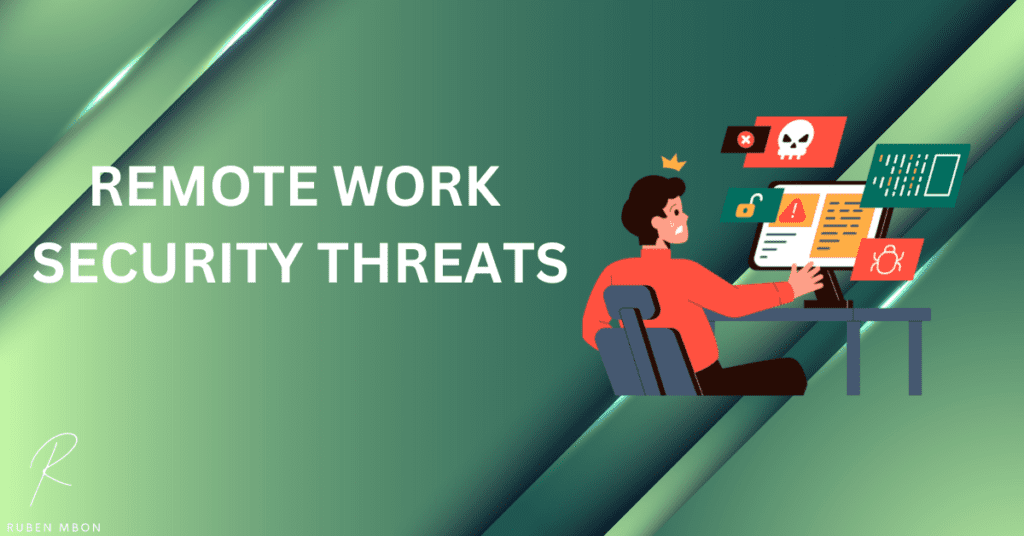
5. Unauthorized access
Unauthorized access to a company’s systems or data can have serious implications. This is why it’s important for remote workers to use secure authentication methods, such as two-factor authentication or biometrics when accessing sensitive information. They should also be aware of the potential risks posed by public cloud services, as these can be vulnerable to data breaches.
6. Social engineering
Social engineering is a type of cyber attack that relies on human interaction and deception. Attackers will typically use social media or other methods to gain secure access to sensitive information or networks. This can be done by impersonating an employee, manipulating people into revealing confidential data, or using phishing attacks.
7. Data leakage
Data leakage occurs when sensitive information is unintentionally disclosed, either through human error or malicious activities. For example, an employee may accidentally email confidential documents to the wrong person or post them on a public forum. It’s important for remote workers to be aware of these risks and take the necessary steps to protect their data.
8. Insider threats
Insider threats may arise from malicious employees or contractors who have access to sensitive information. To protect against this type of threat, remote workers should ensure that all data is encrypted and that access management is in place to limit who can view or modify certain documents.
All these threats can have serious implications for both companies and their remote employees.
Tips for Protecting Remote Workers
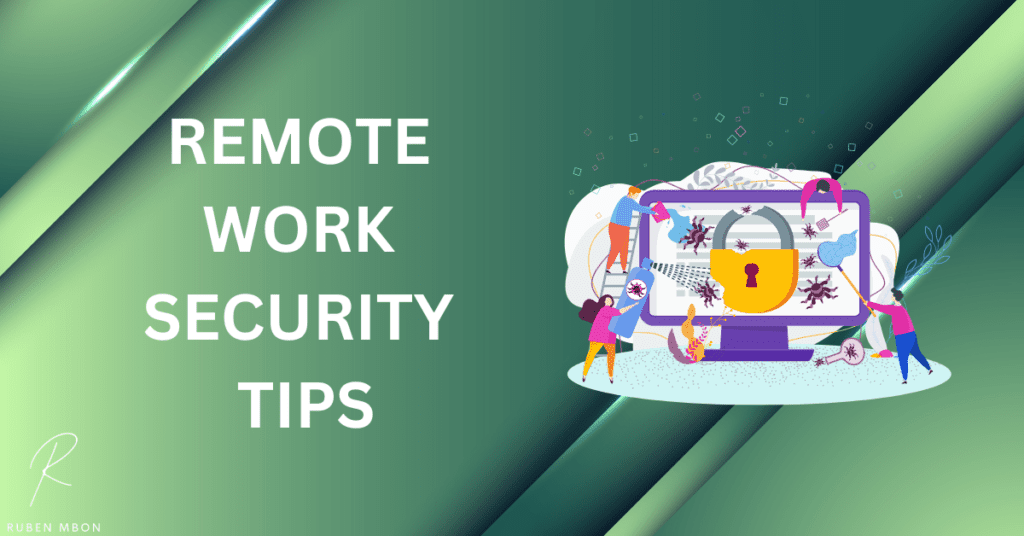
Here are some tips for businesses and remote workers to help protect against security threats:
Use a secure connection: Make sure that remote workers are using a secure connection, such as an encrypted virtual private network (VPN) or private server when accessing company data or systems.
Educate remote employees: Provide remote workers with training on cyber security best practices, such as how to recognize phishing attacks and create strong passwords.
Have a policy in place: Develop policies around the use of personal devices for work purposes and make sure that all remote workers understand and abide by them.
Monitor systems: Monitor company networks and systems for any suspicious or unauthorized activity that may indicate a potential security breach.
Invest in tools: Invest in the right tools to protect against cyber threats, such as malware protection software, virtual private networks (VPNs), and firewalls.
Backup data: Make sure that all sensitive data is backed up regularly and stored securely. This will help ensure that information can be recovered in the event of a data breach or system failure.
Implement access control: Implement remote access control measures to limit who has access to sensitive information or systems like multi-factor authentication, as well as what actions they are allowed to take.
Review security regularly: Conduct regular reviews of cyber security policies and practices to make sure all remote workers are following them correctly.
Following these tips will help ensure that your remote workforce is protected from the latest threats, so you can focus on your business objectives with peace of mind.
Remote Work Security Policy
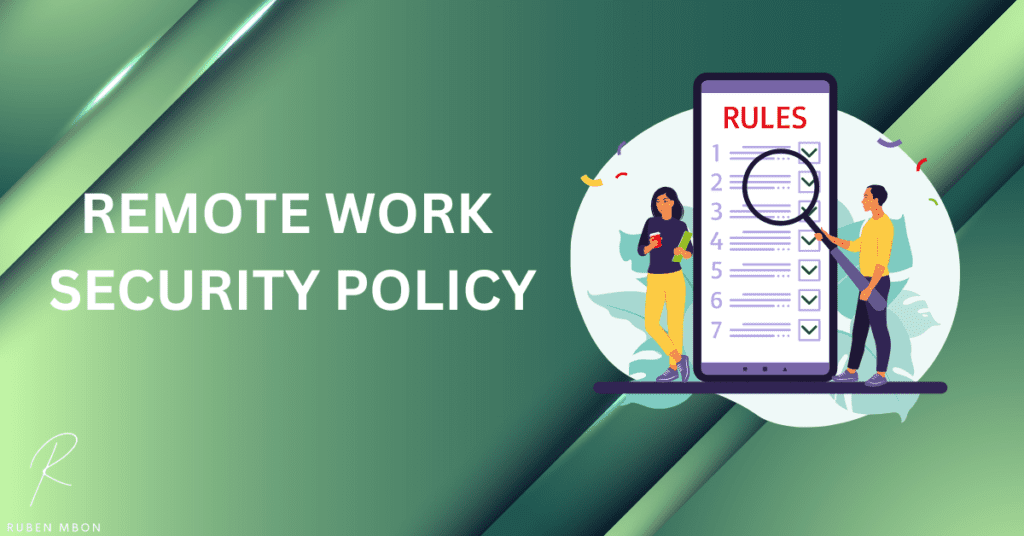
Creating a remote work security policy is an important step for businesses and remote workers alike. This policy should outline the rules and guidelines for using company systems, data, and devices when remote working.
The policy should include information on topics such as acceptable use of company resources, access control measures, data protection procedures, and any other relevant information that will help keep remote workers safe.
It should also include information on how to report security incidents, such as data breaches or unauthorized access attempts, and outline the procedures for responding to them.
By having a comprehensive policy in place, businesses can ensure that their remote workers are aware of the security risks they face and have the necessary tools to protect themselves.
Conclusion
Having a secure remote work environment is essential for any business. It’s important to understand the potential security risks and take steps to protect your systems, sensitive data, and remote employees from these threats.
By following best practices such as using a secure connection, educating remote workers on cyber security protocols, and having an up-to-date security policy in place, businesses can ensure that their remote workforce is protected and secure.
With the right security measures in place, businesses can rest assured knowing that their remote workers are safe from potential threats and that their sensitive data and systems remain secure.





